
Vietnamese currency is the Vietnamese Dong (VND). It serves not only as a means of buying, and selling daily, but the symbols chosen to be printed on it also carry additional significance.

Vietnam currency
However, locations on currency are intended to promote and safeguard the beautiful landscapes and historical landmarks that demonstrate value for the Vietnamese people. Let's explore the outstanding places depicted on Vietnamese banknotes with Asia King Travel.
Currently, the VND 500 banknote is the smallest denomination in circulation. The banknote features an image of the bustling and crowded port area in Hai Phong City. Hai Phong Port constructed by the French in 1874 is the second-largest seaport in Vietnam and the largest in the Northern region. Every local proudly introduces and ties to the city's identity as a "sea city”.
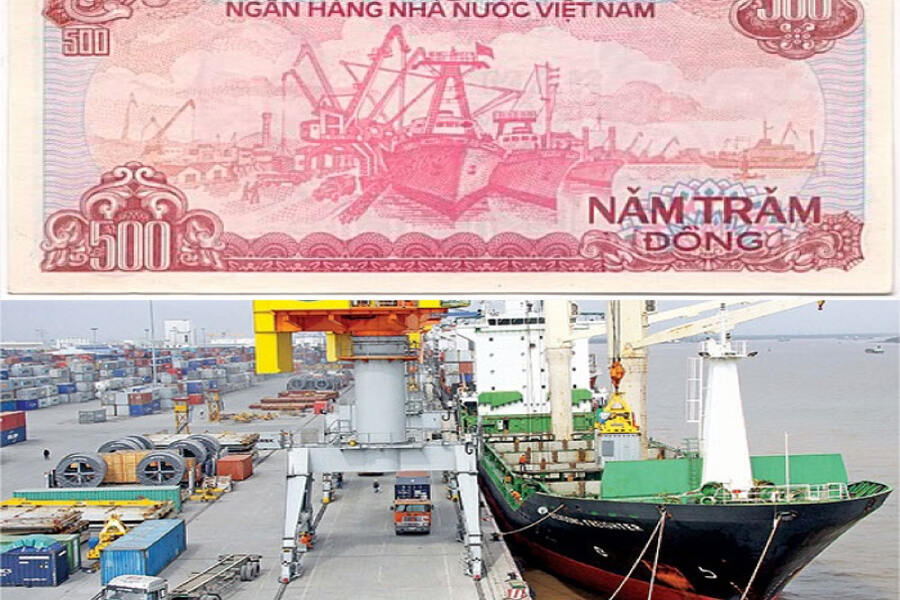
500 Vietnamese dong banknote with the bustling seaport
Hai Phong Port holds significant economic value. In 2022, it was recognized as one of the three major ports in Vietnam by the UK's Lloyd’s List Maritime Magazine, ranking among the top 100 ports worldwide for cargo throughput.
Elephants symbolize the region's unique identity in the sunlit and windswept Central Highlands. They are intelligent animals and have played an important role in Vietnam's economy and culture. For a long time, local people have domesticated elephants for tasks such as logging and performing in festivals, making these images an iconic feature of the highlands.

An iconic symbol visiting Central Highlands
VND 1,000 banknote appears as an image of workers riding elephants to harvest timber in the Central Highlands, specifically in Yok Don National Park. Yok Don National Park located in Buon Don and Ea Sup districts of Dak Lak Province, is approximately 40 kilometers northwest of Buon Ma Thuot City. Established in 1992, the park is one of Vietnam's largest nature reserves.
VND 2,000 banknote illustrates a scene set at the Nam Dinh Textile Factory (in 2016 it was replaced by the Textile Complex). The image shows three female workers operating in the factory. The French built the factory at the end of the 19th century, once considered Indochina's largest textile factory.
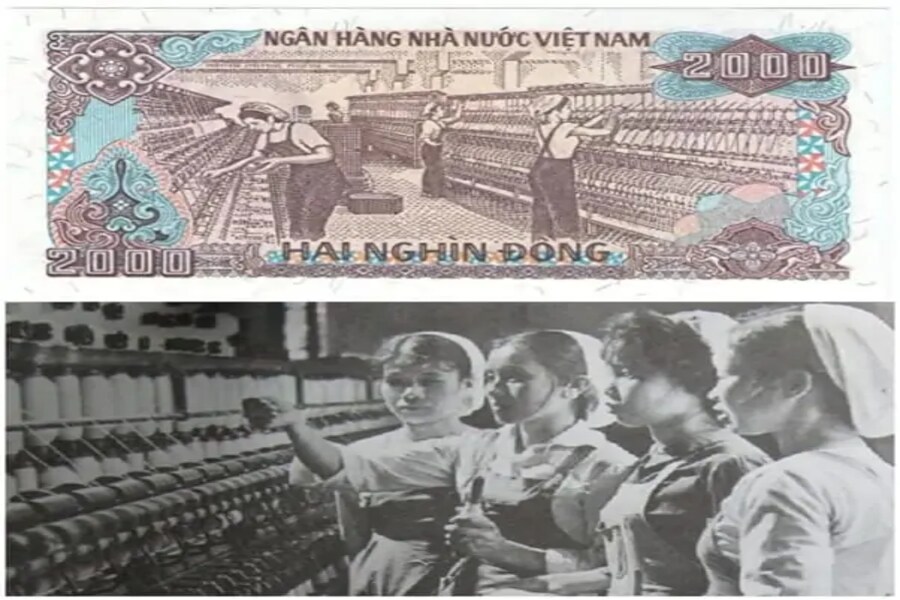
Women employees worked hard in factory
The image of three female workers on the VND 2,000 banknote holds aesthetic value and honors labor, women's contributions, and Vietnam's socio-economic progress. This depiction proudly showcases the core values and spirit of Vietnam.
The image of Tri An Hydropower Plant appears on the VND 5,000 banknote. This hydropower project represents the friendship between Vietnam and the Soviet Union. With financial and technological support from the Soviet Union, the plant's construction began in 1984 then put into operation in 1991.
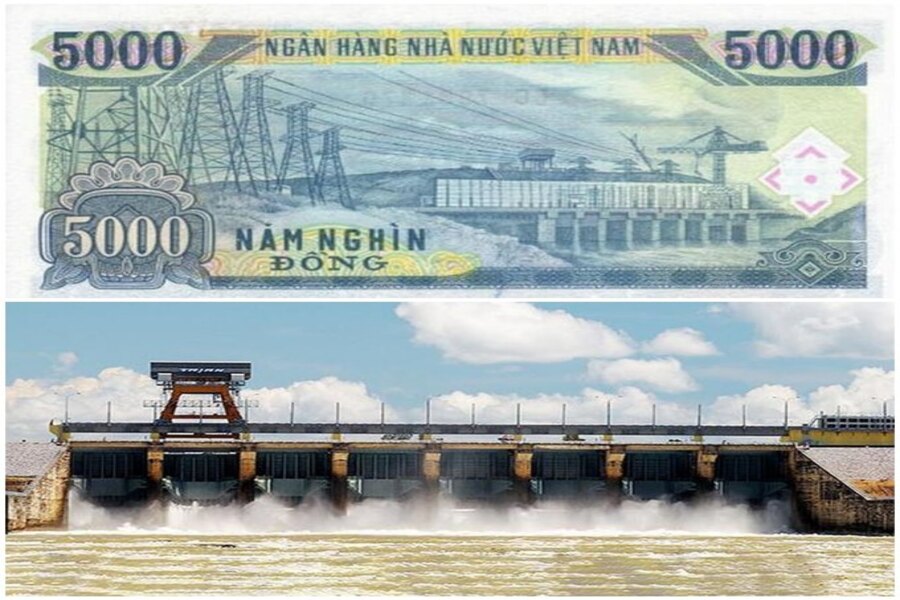
Hydroelectric plant with large capacity
Tri An Hydropower Plant's primary purpose is to integrate with the national power grid, providing electricity to other power plants across the country. Additionally, as a multipurpose hydropower facility, it ensures a reliable water supply for residential use, supports agricultural irrigation and helps manage floodwaters.
Bach Ho Oil Field is depicted on the VND 10,000 banknote. The oil field was discovered in 1975 and started being exploited in 1986.
Bach Ho is located in the Cuu Long Basin, approximately 145 kilometers off the coast of Vung Tau with reserves of about 300 million tons. This notable oil field is operated by Vietsovpetro, a joint venture between PetroVietnam (Vietnam Oil Group) and Zarubezhneft (Russian oil company).

Vietnam's largest and most renowned oil reserve
Bach Ho is acknowledged as the largest oil field in Vietnam and stands out globally for enormous reserves, surpassing 500 million tons of natural fuel. It is considered a remarkable milestone in Vietnam's oil and gas science and technology.
Bridge Pagoda is not just a treasured landmark of Hoi An Ancient Town, it's also featured on the VND 20,000 banknote. Perching on a bridge over a small creek, this charming pagoda radiates a rustic and ancient beauty. Built by Japanese merchants in the early 17th century, it is also called the "Japanese Bridge" by the locals.

An ancient bridge lies on Thu Bon River flows through Hoi An
Different from other pagodas, Bridge Pagoda is dedicated to Bac De Tran Vu, the protection deity that grants joy and happiness.
Read more: Vietnam's currency: Essential things to know for your trip
The images printed on the VND 50,000 banknote are Nghenh Luong Pavilion and Phu Van Lau Pavilion in Hue City. Nghenh Luong Pavilion is a structure built under the Nguyen Dynasty in 1852, serving as a resting place for the king before boarding the dragon boat for a trip on Huong River.
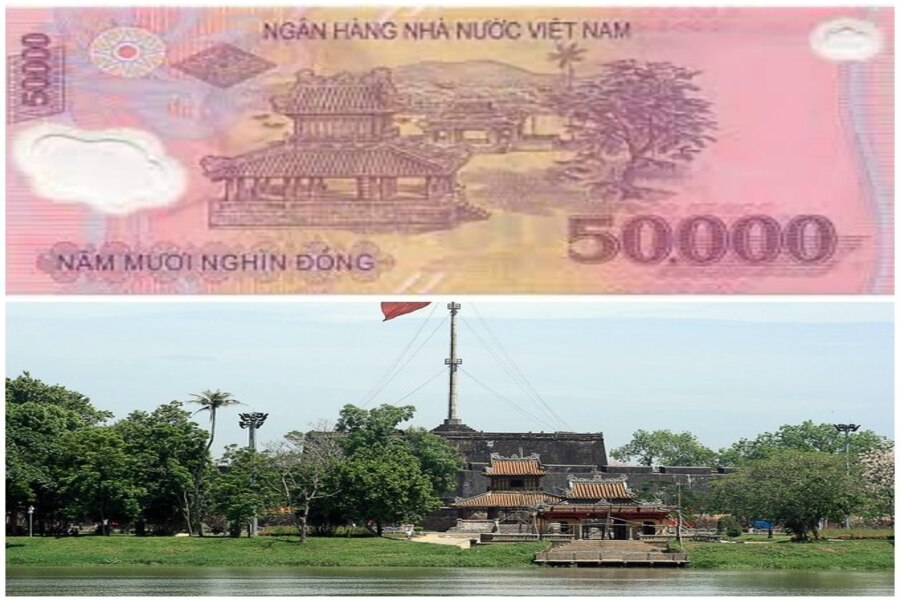
Historic architecture in the heart of Hue City
Besides Nghenh Luong Pavilion, the banknote also features Phu Van Lau Pavilion. Built under King Gia Long’s reign, this pavilion was used to announce important edicts and to post examination results for examinees from the court.
Khue Van Cac, part of the Temple of Literature is a Hanoi prominent historical monument and is shown on VND 100,000. The Temple of Literature often referred to as Vietnam's first university, represented the enduring cultural essence and educational values.
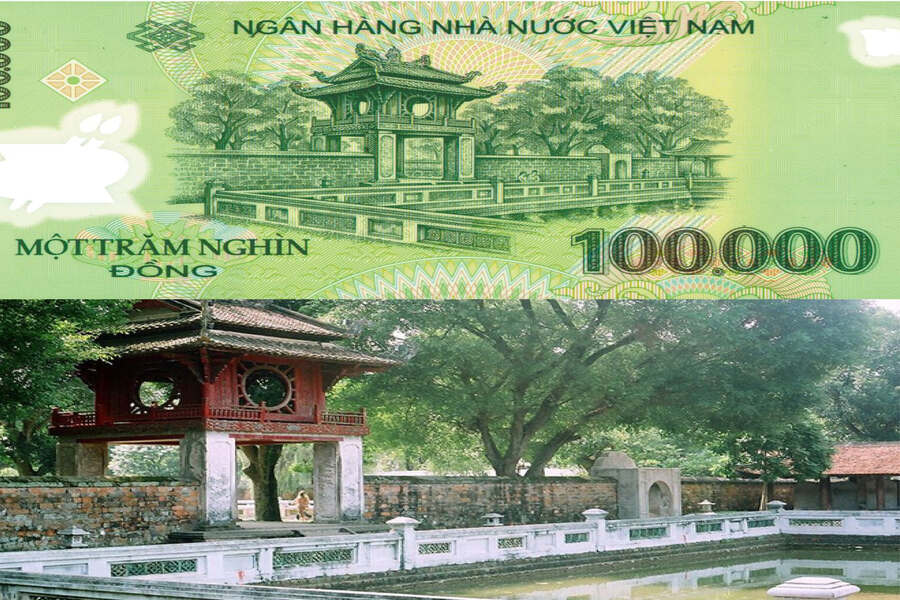
Famous Vietnamese cultural heritage sites to visit in Hanoi
Khue Van Cac was built in 1805 during the reign of King Gia Long. Initially, it served as a venue for important royal ceremonies and examinations. It is also a place to honor the nation's distinguished scholars and talents.
Visitors are particularly impressed by the round windows, which vividly depict the image of the shining "Star of Literature" in the sky. This reflects the brilliance and wisdom of esteemed scholars.
Dinh Huong Stone is a renowned island in Ha Long Bay, a UNESCO World Natural Heritage Site. This natural wonder is represented on the VND 200,000 banknote and celebrated for spiritual significance. It is seen as a symbol of the fortunate.
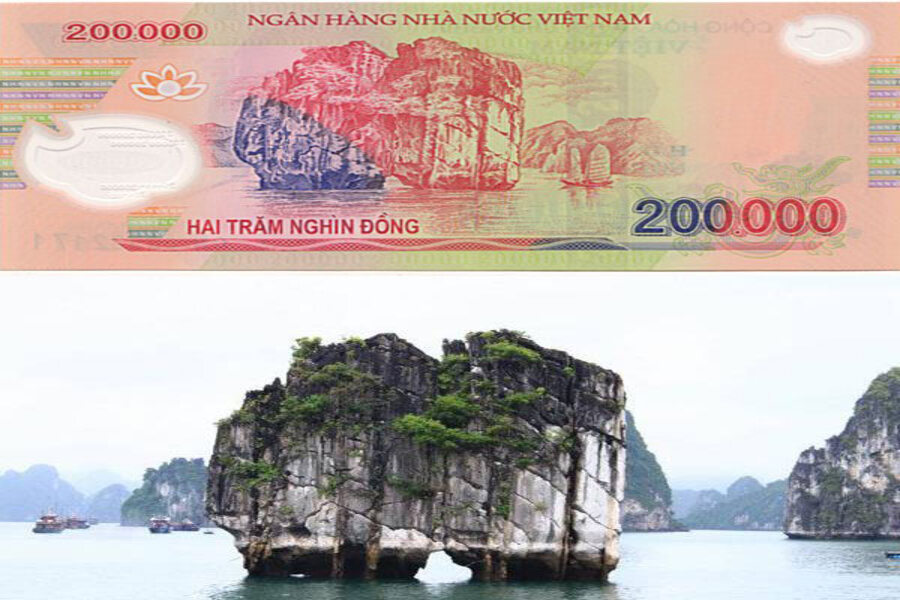
Stunning destinations to explore in Ha Long
The island's shape resembles a grand incense burner, standing tall and impressive. It evokes a giant censer image resting on four slender but surprisingly sturdy stone pillars, captivating visitors with majestic presence.
VND 500,000 is the highest denomination in Vietnam, showing a picture of a traditional five-room thatched house in Lang Sen, Nam Dan, Nghe An. This is the hometown of President Ho Chi Minh, the esteemed leader of the Vietnamese revolution.
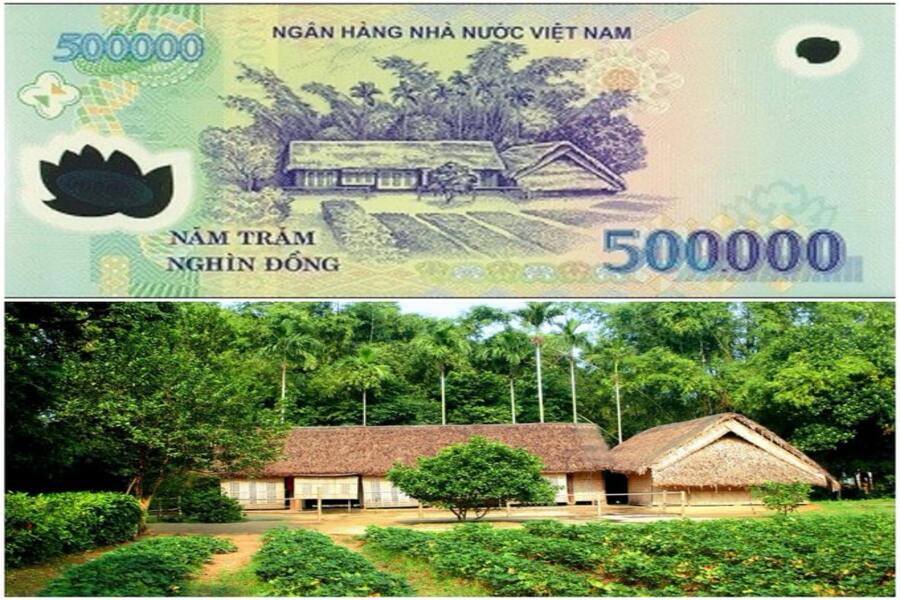
Ho Chi Minh's thatched house - a place preserving cherished moments
This banknote vividly presents the simplicity and traditional architecture of Vietnamese rural villages through the depiction of Ho Chi Minh's thatched house. In 1979, this place was recognized as a Special National Relic and stands as one of the four most significant historical sites in Vietnam associated with President Ho Chi Minh.
Vietnam's currency showcases the nation's rich heritage, with each banknote telling a unique story. Contact us if you want to travel to Vietnam and explore famous locations appearing in Vietnamese currency.
Read more: How much does it cost to travel to Vietnam?